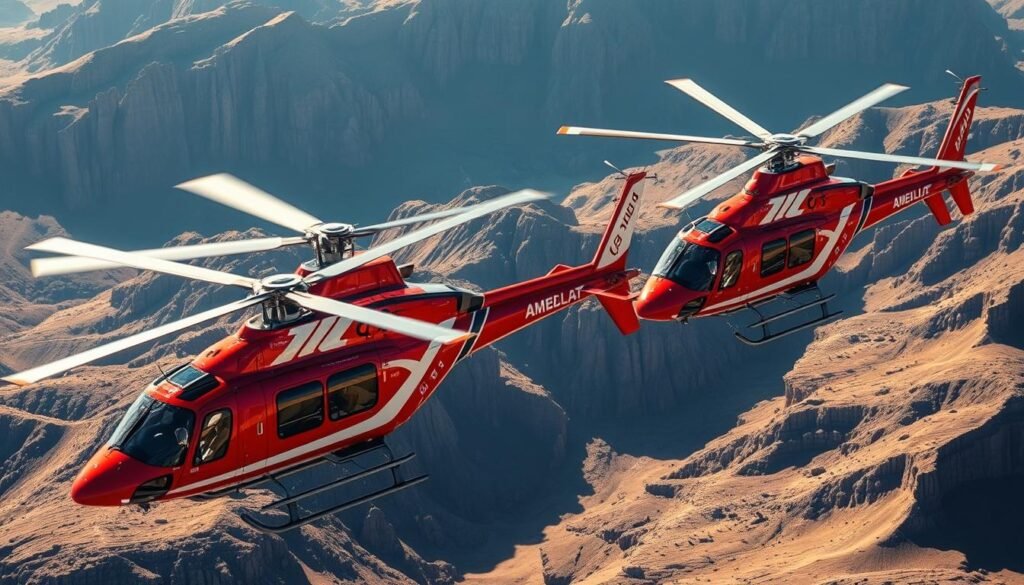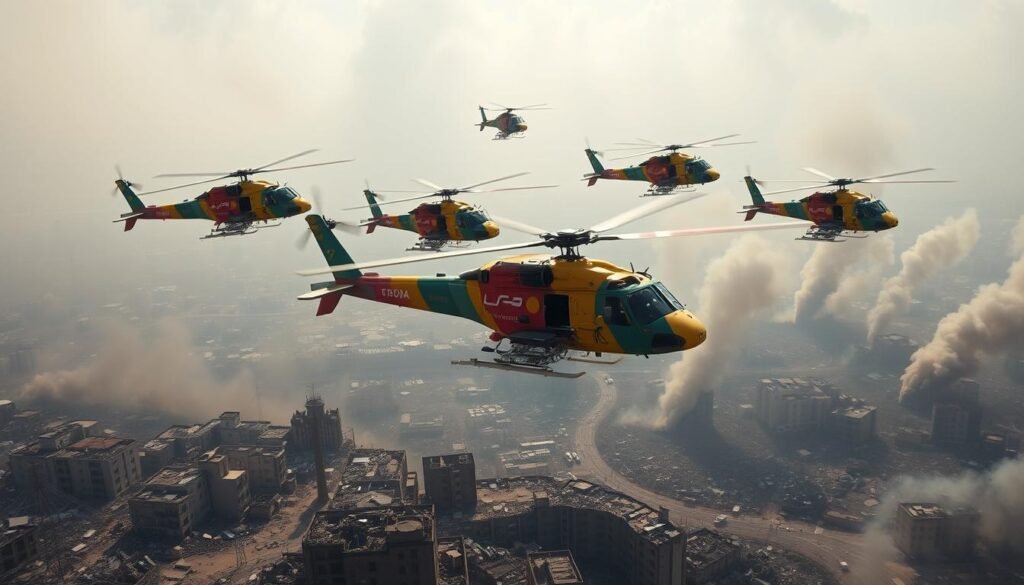In emergency medical situations, the speed at which a patient receives care can mean the difference between life and death. Both helicopters and ground ambulances play critical roles in Emergency Medical Services (EMS), but knowing when to use air transport versus ground transport is essential for maximizing patient outcomes. This article explores the key differences between helicopters and ground ambulances, highlighting when air transport is the best option.
1. Speed: When Every Second Counts
The most significant advantage of helicopters over ground ambulances is their speed. In time-sensitive emergencies, helicopters can significantly reduce the time it takes to get a patient to a hospital.
Ground Ambulances:
- Traffic Delays: Even with sirens and lights, ground ambulances are subject to traffic delays, especially in congested urban areas.
- Road Conditions: In rural or remote areas, poor road conditions or lack of infrastructure can slow ground ambulances.
- Longer Travel Time: Ground ambulances are limited by road networks, often resulting in longer transport times, particularly over large distances.
Helicopters:
- Direct Routes: Helicopters fly directly to the hospital, bypassing traffic and road obstructions.
- Faster Over Long Distances: For patients in remote areas or those needing to be transported to specialized medical centers far from the scene, helicopters can dramatically reduce travel time.
- Critical in the “Golden Hour”: In trauma cases, the “golden hour”—the first 60 minutes after a severe injury—is critical. Helicopters are often the best option for getting patients to trauma centers within this window.
When Air Transport is Critical:
- Severe Trauma: In cases of severe trauma, such as car accidents or industrial injuries, air transport ensures that patients reach a trauma center quickly for immediate care.
- Remote Areas: For patients in rural or remote areas where ground transport would take too long, helicopters are essential for reducing transport time.
2. Accessibility: Reaching Remote and Hard-to-Access Locations
In many emergencies, especially in rural or isolated regions, accessibility becomes a significant challenge for ground ambulances. Helicopters provide a solution by being able to land in areas that ground ambulances cannot reach.
Ground Ambulances:
- Road Dependent: Ground ambulances rely on roads, which may not exist or may be difficult to navigate in certain terrains, such as mountains, forests, or disaster zones.
- Limited Access in Natural Disasters: During natural disasters, such as floods or earthquakes, roads may be blocked or destroyed, preventing ground ambulances from reaching affected areas.
Helicopters:
- Remote and Rural Access: Helicopters can land in rural areas, remote regions, and rugged terrains where ground ambulances cannot reach.
- Disaster Relief: In large-scale natural disasters, helicopters are often the first responders, providing rescue and transport to patients in areas that are cut off from ground access.
- Maritime and Wilderness Rescues: Helicopters are used in maritime rescues and wilderness searches, where ground transport is not possible.
When Air Transport is Critical:
- Mountainous and Remote Areas: When patients are stranded in hard-to-reach locations, such as mountains or forests, helicopters are the best option for quick evacuation.
- Natural Disasters: After hurricanes, floods, or earthquakes, helicopters provide essential access to patients in need of rescue and medical transport.
3. Onboard Medical Care: Bringing the ICU to the Sky
The level of care provided during transport is another critical factor when deciding between helicopters and ground ambulances. While both are equipped with advanced life-support systems, helicopters often have more advanced medical equipment and are staffed with highly specialized medical personnel.
Ground Ambulances:
- Basic Life Support (BLS): Ground ambulances can provide basic life support, including oxygen, splints, and cardiac monitoring.
- Advanced Life Support (ALS): Some ground ambulances are equipped with ALS capabilities, such as defibrillators, IV lines, and medications. However, the space constraints and road conditions can limit the extent of care.
- Less Specialized Personnel: Ground ambulances are typically staffed by paramedics or EMTs, who provide necessary care but may not have specialized trauma training.
Helicopters:
- Advanced Equipment: Helicopters are equipped with more advanced medical technology, including ventilators, defibrillators, and IV pumps. This allows for higher levels of care, similar to what’s found in an ICU.
- Specialized Medical Staff: Helicopters are often staffed with flight paramedics or nurses who are trained to handle critical care patients. In some cases, physicians may be onboard to provide advanced medical interventions.
- Faster Access to Specialized Care: In situations where patients need advanced medical intervention, such as surgery or treatment for stroke, helicopter transport can provide life-saving care while en route to the hospital.
When Air Transport is Critical:
- Critical Care Patients: For patients needing advanced medical care, such as those with severe trauma, heart attacks, or strokes, helicopter transport is essential for providing ICU-level care during transit.
- High-Risk Pregnancies or Neonatal Transport: Helicopters are used to transport high-risk mothers and newborns who require specialized care not available at local hospitals.
4. Cost Considerations: Balancing Speed with Expense
While helicopters provide undeniable advantages in terms of speed and access, they also come with a higher cost compared to ground ambulances.
Ground Ambulances:
- Lower Cost: Ground ambulances are generally more affordable than helicopter transport, making them the preferred choice for non-life-threatening situations or when the hospital is close by.
- Wider Availability: Ground ambulances are widely available and typically the first line of response in most emergencies.
Helicopters:
- Higher Cost: The cost of operating a helicopter is significantly higher than that of a ground ambulance. Factors like fuel, specialized medical staff, and the aircraft itself contribute to the expense.
- Limited Availability: Helicopters are often reserved for the most critical situations, and not every region has access to an EMS helicopter.
When Air Transport is Critical:
- Cost vs. Time Sensitivity: In cases where time is the most critical factor, such as severe trauma or cardiac emergencies, the higher cost of helicopter transport is justified by the potential to save lives.
- Insurance Coverage: Many insurance plans cover helicopter transport when deemed medically necessary, helping to offset the cost for patients.
5. Decision-Making: When to Choose Air vs. Ground Transport
The decision to use a helicopter or a ground ambulance is typically made by first responders, paramedics, or dispatch teams based on the severity of the patient’s condition, the location of the emergency, and the availability of resources.
Considerations:
- Severity of Injury or Illness: For critical injuries or conditions that require immediate hospital care, air transport is often the best option.
- Location of the Emergency: If the patient is in a remote or inaccessible area, helicopters provide the fastest means of evacuation.
- Availability of Air Resources: In regions where EMS helicopters are readily available, air transport is often chosen for life-threatening emergencies.
Ground Ambulance Use Cases:
- Short-Distance Transport: If the hospital is close and road conditions are favorable, ground ambulances are typically the preferred choice.
- Non-Critical Patients: For patients with less severe injuries or conditions, ground ambulances provide a more cost-effective and practical solution.
Helicopter Use Cases:
- Severe Trauma or Medical Emergencies: Patients with severe trauma, heart attacks, strokes, or other critical conditions benefit from helicopter transport due to the speed and level of care provided.
- Remote or Inaccessible Locations: In areas where ground ambulances cannot reach, helicopters are the only option for timely medical intervention.
Conclusion
While both helicopters and ground ambulances are essential components of Emergency Medical Services (EMS), the decision to use one over the other depends on several factors, including the patient’s condition, location, and time sensitivity. Helicopters excel in situations where speed and access to remote areas are critical, while ground ambulances are ideal for shorter distances and less severe emergencies. By understanding when air transport is the better choice, EMS teams can ensure that patients receive the fastest and most appropriate care possible, ultimately saving more lives.
Related Articles
- The Importance of Air Ambulance Helicopters in Rural Healthcare
- How Helicopters Help in Remote Area Rescue Missions
- Challenges Faced by Helicopter Pilots in Emergency Operations
- Helicopter Technology Advancements Improving Emergency Response
More from This Category
- Helicopters in Natural Disaster Relief: Saving Lives from Above
- A Day in the Life of an EMS Helicopter Pilot
- Top Helicopter Models Used in Emergency Medical Services (EMS)
- Helicopters vs. Ground Ambulances: When Air Transport is Critical
- How Helicopters Have Transformed Search and Rescue Operations
- The Role of Helicopters in Modern Emergency Medical Services (EMS)



